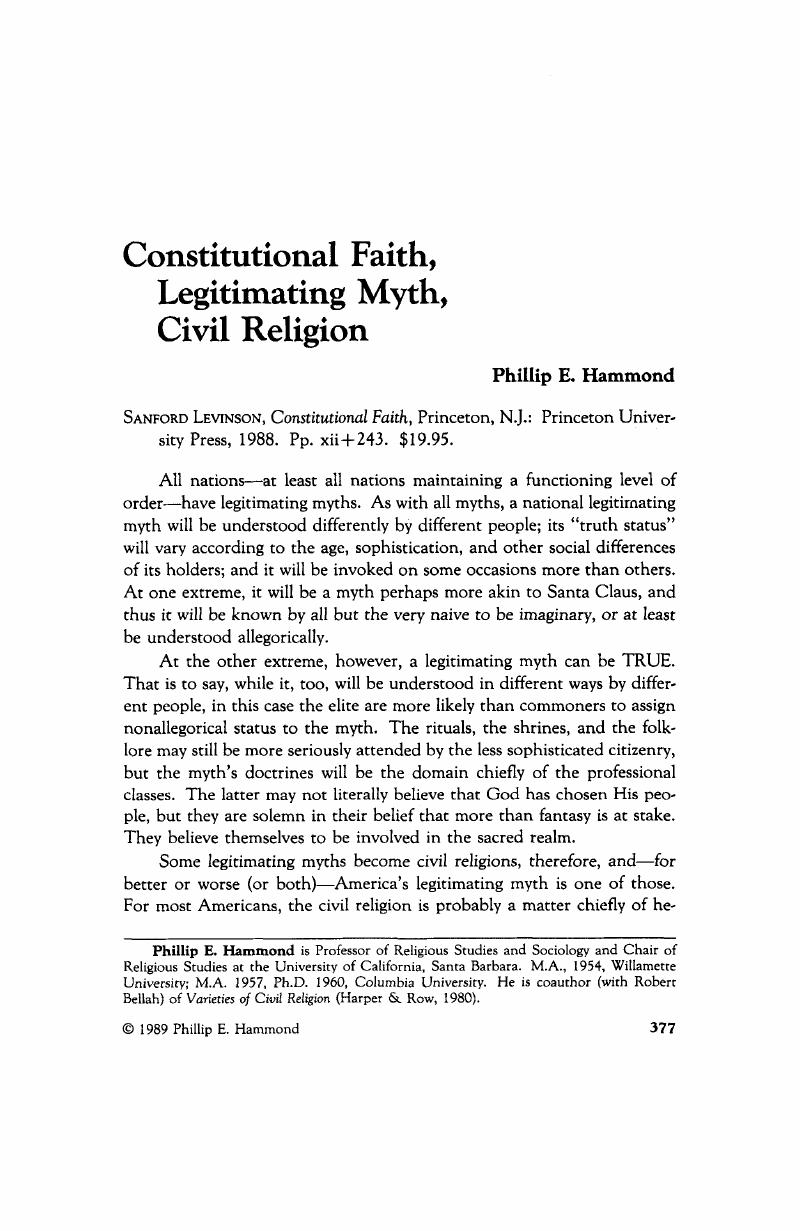No CrossRef data available.
Published online by Cambridge University Press: 27 December 2018

1 Prudence dictates an explanatory note here. It is obviously not my role as a social scientist to authenticate religions. Rather, what I am asserting is that, if an ideology functions as a religion, it must exist in reality in the minds of its followers. They must regard it as not subject to their choice. I think this perspective is faithful not just to the world's religious adherents but also to Levinson's originating question: Can faith in the Constitution rightfully be regarded as “faith” if persons think they are choosing to be faithful?Google Scholar
2 Robert Bellah's 1968 seminal essay generated a number of survey studies that purported to measure Americans' degree of civil religiousness and, often finding no discernable amount, declared an American civil religion not to exist. It is worth noting that not only did Bellah routinely deny that such studies bore on his thesis but also that his recent book, Habits of the Heart, treating themes of citizenship, republican virtue, and community versus individualism, at no point uses the term “civil religion.”Google Scholar
3 I recognize that the word “laity” does not fit the case of either the law student or seminarian, who often is being groomed to join the ranks of the philosopher-kings. Levinson nonetheless suggests–and I am inclined to accept as valid–that in law school and seminary alike, much that is taught does not, as constitutional law courses and biblical study courses must, challenge the legitimacy of the very enterprises they themselves are engaged in. Hence the myth–some myth–is inescapable.Google Scholar
4 The other instance (at 176) occurs in a discussion of whether a lawyer (or anybody for that matter) has a “true self” to which one can be faithful. That belief, says Levinson, is chimerical.Google Scholar
5 A large part of Constitutional Faith is devoted to the question of oaths–their content and meaning. I am not including any discussion here of these matters, though it is only fair to point out how much mileage Levinson gets out of detailed analysis of what I take to be the obscure case of Schneiderman v. United States, 320 U. S. 118 (1943).Google Scholar
6 There was the notable exception of James Watt, Reagan's first Interior Secretary, who, given his pre-millennialist, dispensationalist view of the Bible, wondered out loud whether protection of the wilderness was all that important in light of the imminence of the Second Coming. It is a measure of how private we expect such views to remain that the public was dumbfounded by Watt's remarks.Google Scholar
7 Alexander Bickel, The Least Dangerous Branch (Indianapolis: Bobbs-Merrill, 1962).Google Scholar
8 See, e. g., Kenneth Dolbeare and Phillip E. Hammond, The School Prayer Decisions: From Court Policy to Local Practice (Chicago: University of Chicago Press, 1971), for an analysis of the actual consequences of Engel v. Vitale, 370 U. S. 421 (1962) and Abington Township School Dist. v. Schempp, 374 U. S. 203 (1963) in a number of closely monitored communities as well as nationally.Google Scholar